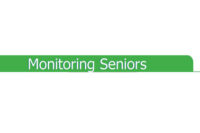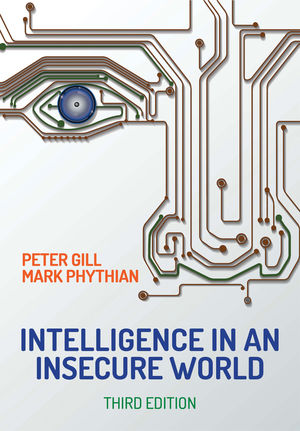PERS: A Science & An Art
A growing need for PERS monitoring and other home healthcare services presents unique opportunities for security dealers willing to get to know this distinctive market.


PERS monitoring is much more than a new revenue stream. The business model differs from traditional security monitoring in every aspect, from the type of customer to the nature of the response call, so dealers should use care in selecting a monitoring partner. Central stations experienced with PERS not only ensure appropriate response to alert calls, but also can be valuable resources to help educate dealers who are new to the business.
PHOTO COURTESY OF EMERGENCY 24

Ralph Collier, PERS product manager for Suwanee, Ga.-based EMC Security, speaks with customer Twyla Keiser at EMC’s design center. Like many PERS customers, Keiser was not buying for herself, but instead purchasing a system for her parents. Both seniors and their caregivers look for dealers they can trust.
PHOTO COURTESY OF EMC SECURITY



The fact is, we’re not getting any younger. As a nation, we are living longer and the largest segment of the population — the baby boomers — is hitting retirement age. In the United States, the age 65 and over demographic is the fastest growing segment of the population, and of that group the fastest growing segment is over age 85, says Ken Gross, president and founder of Medical Alert Monitoring Association (MAMA) and president of Broomall, Pa.-based Connect America. Not surprisingly, more and more people, either the seniors themselves or their adult children, are interested in personal emergency response systems (PERS). Gross adds that people are staying in their homes longer, by choice or the inability to sell their homes in the weak real estate market, and because of the limited availability of beds in hospitals and other facilities.
“Most of the major PERS companies (companies that are selling thousands of units a month) are growing at double digit rates,” says Mark Ingram, president of Tel Aviv, Israel-based manufacturer Visonic Technologies. “We’ve only started getting into the baby-boomer generation. We’ve got millions and millions who are going to need it.’”
Dealers see these numbers and recognize a tremendous opportunity to enter a strong growth market and increase recurring monthly revenue (RMR). “It dovetails very nicely with the security because of life safety and RMR. The numbers are starting to make sense for security dealers,” says Kevin O’Connor, president of LogicMark, based in Fairfax Station, Va.
However, not all security dealers entering the PERS market are successful. Although PERS does share some similarities with traditional alarm monitoring, it is actually a very different type of business.
“It’s a science, and it’s an art when dealing with older people,” advises Howard Avin, vice president of Sales and Marketing for NationWide Digital Monitoring of Freeport, N.Y.
Ingram explains, “Many times security companies see PERS as a great opportunity, but it’s a totally separate, distinctive business. They don’t do well because they don’t first examine and segregate the business.” Ingram adds the key to success lies in understanding how different the business is and really examining the details, “It takes a separate management style, different selling technique, and different monitoring response.”
Successful PERS providers develop a thorough understanding of the customers and their needs. “You are going into a medical field. You have to understand older people, falls — how and why they happen,” Ingram advises. “If you can hire someone with healthcare or medical background in industry, you are much better off.”
PERS customers are about evenly split between the seniors who need the devices for themselves, and caregivers, often adult children, purchasing the systems for their parents. The profile of the typical end user is a 75-90 year old female, and the typical caregiver is a 45-60 year old female, usually the daughter of the user, Gross explains.
To succeed with this split clientele, Avin shares the dealer should focus on the needs of each, “For children, it’s peace of mind knowing that if something goes wrong, help is on the way. For seniors, it’s independence.”
Marketing to these two different groups requires different approaches. While the caregivers may be comfortable researching PERS and other home healthcare services over the Internet, seniors tend to prefer a more personal touch.
“In a lot of ways, it mirrors, the security industry: A lot of big players nationally, but also a lot of smaller dealers are doing well,” O’Connor observes. “Seniors like having someone come in and do the installation. “The local, independent dealer has an advantage from that standpoint.” He adds, “It’s not a technical sale. It’s a matter of communicating well with seniors.”
PERS product manager Ralph Collier, EMC Security, Suwanee, Ga., says, “It’s really not a sale until you get in the house and talk to the customer.”
Getting into the home not only secures the current sale, but opens the door for more. “There’s a marketing opportunity by sending someone out,” says Collier, who regularly gets referrals for friends, neighbors and family members from the current customer.
Dealers can also take advantage of regular calls to their security clients to market the PERS offerings. Kevin McCarthy, national sales manager of EMERgency24, a Chicago, Ill.-based monitoring company, recommends that dealers market to everyone on their current client list: “If the customer doesn’t need it, someone they know needs it.”
Innovative PERS providers are marketing through health care providers, chambers of commerce, drug stores chains, home shows, and churches.
Industry Analyst Laurie Orlov, of the market research firm Aging in Place Technology Watch, encourages dealers to get to know seniors and their needs and reach out to them where they are. Orlov suggests hosting an event at a senior center. Cater it and bring in speakers discussing topics of interest to older adults to attract more potential clients.
Approximately half of PERS units are purchased by the adult children or other caregivers for the end users. These customers are more comfortable with technology and are looking for solutions on the Internet. The larger companies in the PERS market rely heavily on their Websites for sales, but the Internet presents plenty of opportunities for smaller companies to compete as well.
Regardless of the marketing channel, the most important thing for dealers to know about this business is that it is based on trust. “This is an industry that needs to be built around trust and confidence,” Orlov shares. She recommends that dealers craft their websites to build trust, establish the company’s identity, and attract customers.
What distinguishes the medical alert monitoring industry from traditional security monitoring services is that the primary focus is the well-being of a person who is frail or at risk, says Barry Nyer, senior manager for Philips Lifeline and member of the board of directors for the MAMA.
Duane Paulson, senior vice president of Product and Market Development, for Carlsbad, Calif.-based Linear LLC, sees an evolution in the nature of PERS: “The move is clearly toward predictive PERS. By that, I mean that an action such as pushing a button may not be needed to trigger an event.” Motion sensors can detect whether or not a person gets out of bed in the morning or returns to bed after getting up in middle of the night. Temperature sensors can also provide valuable monitoring information. Because hot weather is a significant factor in health problems for seniors, Linear’s PERS-4200 has a built-in temperature sensor that can send alerts and information to the service provider.
PERS calls always involve two-way voice and are longer in duration. Operators not only contact authorities and notify their clients, but they must also evaluate the nature of the problem and determine the appropriate response. Central station operators may remain on the phone for 20 minutes or more until help arrives.
Call responders are involved with fact-finding and conferencing with emergency services. “It’s much more labor intensive,” says McCarthy, noting that significant part of the job is learning to ask the right questions and often to keep the caller talking until help arrives.
All PERS call center operators receive training in two-way voice communications. Central stations typically provide additional training to give their operators a better understanding of how to manage the needs of the caller and the situation. Some central stations hire emergency medical technicians (EMTs) or provide operators with EMT training. PERS calls do not follow the typical alarm response protocol. They are more customized to user preferences and needs of a given situation. “A senior might be scared, and the operator might have to calm the person down and get the right kind of help,” Avin explains.
Morgan Hertel is vice president of operations for Rapid Response Monitoring Services in Syracuse, N.Y., which monitors more than 200,000 PERS accounts. Because the typical PERS call lasts 3 to 3.5 times the length of a security call, operating a central station that handles PERS monitoring requires additional staffing. PERS monitoring is different in other ways as well, says Hertel: “For every one hour of dispatch time, you need to spend 20 minutes on testing with the installer or user.”
Christopher Baskin, chief executive officer of North Hollywood, Calif.-based American Two-Way, which monitors thousands of PERS accounts, advises dealers looking for a monitoring partner to choose wisely. “Be cautious. A lot of alarm centers are looking to capitalize on growth in PERS may not be truly ready to do so,” he says.
According to Baskin, a good PERS center understands the psychology of the callers; they know seniors. “A senior who is lonely, isolated, or depressed could be in just as much danger as one experiencing chest pains.”
With entrance of new competition in the market, such as Verizon and QUALCOMM, dealers can look to manufacturers, monitoring stations, and industry associations to help them get established. “More than ever, it’s going to be important for dealers to align with the right partner,” Baskin says. Manufacturers and monitoring companies are taking steps to support dealers with classes, marketing materials, equipment, and service agreements to make it easier for the dealers to enter and compete in the PERS space.
Technology Tension |
|
Although manufacturers and PERS providers are eager to explore the potential for new technology, the industry finds itself in an unusual situation in which the market is not demanding it. “The demand is not very sophisticated,” says Mark Ingram, Visonic Technologies, noting that older seniors are often not comfortable with technology such as computers and smartphones. Many seniors are unfamiliar with and intimidated by electronic devices, so adoption is slow. The potential for innovation is there, but the customer demand is not yet sufficient to justify large expenditures on research and development. Seniors are still more likely to use land-based telephone lines and often do not have Internet service, so VoIP services are sometimes not an option. Although the demand for technology in the current generation of PERS users is currently low, Ingram sees the market headed for change over the next decade as baby boomers grow older. |
Going Mobile |
|
Although the overwhelming majority of PERS devices currently in use are linked to a land-based telephone line, industry experts agree that the future of PERS lies in a mobile solution with GPS capability. “It’s going to take the non-mobile PERS down. Everybody’s going to have it as soon as the consumer market demands it,” says industry analyst Laurie Orlov, noting that large telecommunication providers, such as Verizon, are getting into the market. The nature of the technology involved in mobile personal emergency response systems (MPERS) opens up new applications and markets for PERS. “That is a very powerful device, breaking that 600-foot tether of the device to the phone,” says Vince Raia, EMC Security. A cellular-based device with GPS capability provides PERS protection for the user in or away from the home. Coverage is not dependent on proximity to a device connected to a telephone line. Howard Avin, NationWide Digital Monitoring, explains that with MPERS, a geofence (predetermined geographic boundaries) can be established, and if the PERS user leaves the geofence area, an alert can be sent to a caregiver or emergency responders. Using MPERS with a geofence is ideal for monitoring seniors with Alzheimer’s disease or dementia. Alternatively, active seniors may opt to have MPERS available to call for help in case they face an emergency away from home. MPERS creates opportunities for providers to sell not only to elderly individuals, but to people of all ages. Parents can monitor kids and teenagers to ensure they arrive safely at school or home and people with chronic illnesses can use MPERS to get help if they have a medical emergency. “There’s a lot more cradle-to-grave concept of what PERS can be,” says Morgan Hertel, Rapid Response Monitoring Services. |
Looking for a reprint of this article?
From high-res PDFs to custom plaques, order your copy today!










